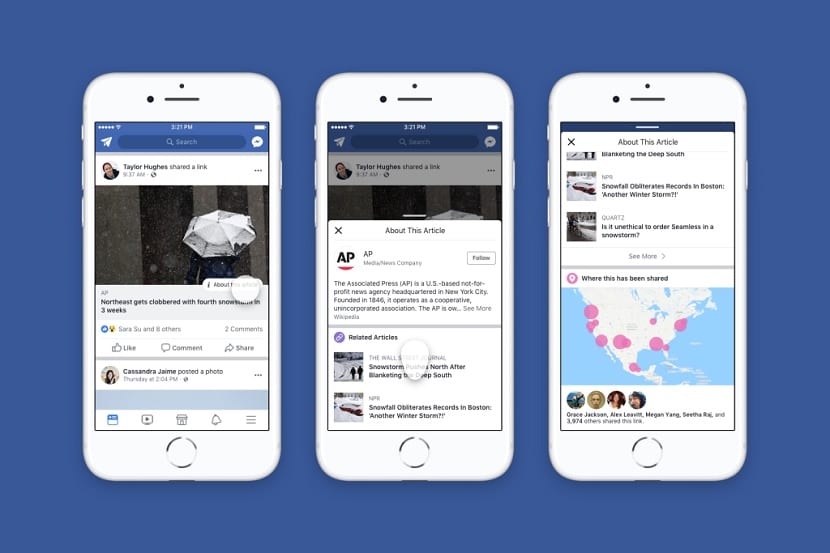
Facebook has had a multitude of problems with fake news. The social network has been the preferred medium for many of these media that generate false news for their expansion. Something that has probably had an influence on elections at the international level. For this reason, the social network has been introducing measures in its fight against them for some time. The most recent of these is a feature called the context button.
Now, We are going to talk about this context button, so that you know what it is and what it is for, as well as how to use it. So that you are clear about the usefulness of this new Facebook tool in its fight against fake news.
What is the context button on Facebook

As we mentioned at the beginning, this new context button is a tool with which Facebook wants to help users detect fake news on the social network. Its operation is based on the certainty that there are pages whose only job is to create and spread false information. In this way, a button is created that informs us about the page that has published the news that we are reading at that moment.
So the button will help us to have information about the page in which we are reading a specific news. Us will display information about the page in question, as well as a history of your highlights. In this way, we have a very clear idea about the page in question. This will help us to determine if the content that this page disseminates is really reliable.
When we see a news on Facebook and click on this context button, We will get the name of the medium that has published said news. We can also see the date on which your website was registered, the first time it was published or the countries in which this news is shared. It is information that will help us distinguish between an established medium that has been in the sector for years, with another medium that has been active for a short time and publishes a specific type of news on the social network.

The one that shows a history of what said medium has published is extremely useful. Since it can help us to determine the reliability of the medium, but also to be able to know if a news item is current or old, because in some cases, the fake news that spreads on Facebook is not current. So we have to be vigilant in this regard.
The main problem is that not all pages offer this context button. It will only appear on those pages that have inserted a code that Facebook has requested. Some may not be bothered, but the established media probably will, as they don't want their news to come across as fake. So it is likely that media that do not use the context button have something to hide with that decision.
How to use the context button on Facebook
Newsroom: Article Context Launch Video
Published by Facebook on Monday, April 2 of 2018
The way to use this context button on Facebook is really simple. When we enter the social network, in the news feed that comes out at the beginning, we must go to the news that interests us or about which we want to know its origin. On the right side of it, we will see that there is a symbol with an «i», of information. We have to click on it.
By doing this, will show us information about said medium on the screen who has published the news. Since when have they been present on Facebook, the segment to which they belong, in addition to some outstanding news that have been published in said medium. In this way, we can know more about this website.
Information that It will help us to determine if it is a reliable website, or if it is possible that it is false information. In any case, we can always look in other media about the same news, to see if it really is like that or if this news exists. So we will leave doubts.